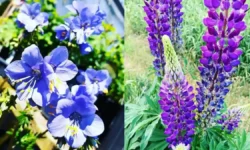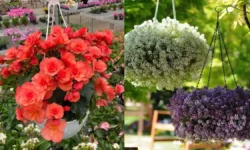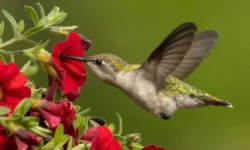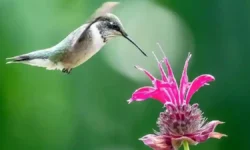Knowing when to transplant tomato seedlings is one of the most important steps in growing healthy and productive tomato plants. The right timing allows the seedlings to establish strong root systems, adapt quickly to outdoor conditions, and produce abundant fruit. Transplanting too early or too late can stress the plants, slow their growth, and increase susceptibility to pests and diseases.
Gardeners often feel uncertain about the perfect moment to move seedlings from trays or pots into their final growing space. While tomatoes are hardy plants when mature, young seedlings are sensitive to environmental changes. Temperature, soil conditions, and the size of the seedlings all play a critical role in determining the right time for transplanting.
This guide explains how to identify the ideal time to transplant tomato seedlings for the best growth. By understanding the correct timing, preparing the soil properly, and acclimating seedlings gradually, you can ensure healthy plants that produce high-quality tomatoes throughout the growing season.
Table of Contents
Ideal Timing for Transplanting Tomato Seedlings
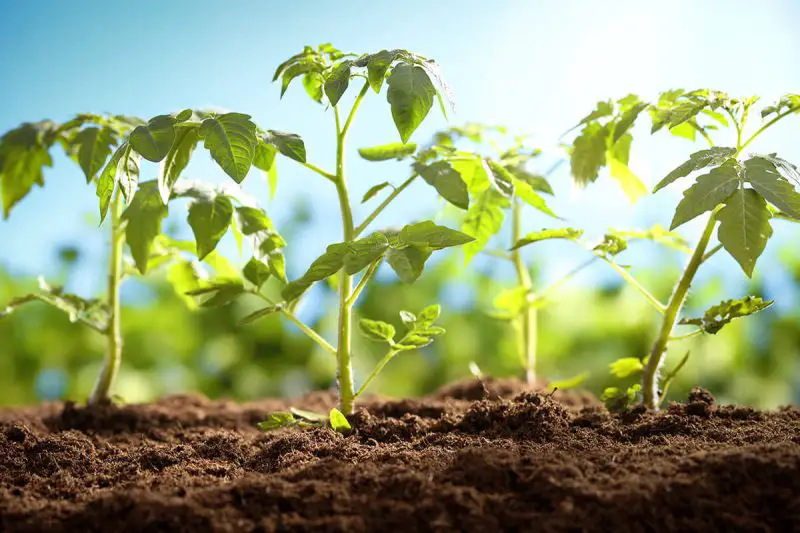
The best time to transplant tomato seedlings is when they are strong enough to handle outdoor conditions but still young enough to adapt quickly. Typically, seedlings are ready to be transplanted when they are six to eight weeks old and have grown at least two to four sets of true leaves. At this stage, the root system is well-developed but not yet root-bound, making it easier for the plant to adjust to new soil.
Temperature is another crucial factor in determining the right time for transplanting. Tomatoes thrive in warm weather, and transplanting should only be done after the danger of frost has passed. The ideal soil temperature for tomato seedlings is at least 60°F (15°C), while daytime air temperatures should consistently remain above 70°F (21°C). Cold soil or sudden temperature drops can shock the seedlings, causing growth delays or even plant death.
Gardeners should also consider local climate conditions. In cooler regions, waiting until late spring or early summer ensures that seedlings are not exposed to cold nights. In warmer regions, transplanting can start earlier in the season, but seedlings should still be protected from sudden weather changes. Checking a local frost calendar can help determine the safest time to transplant tomato seedlings in your area.
Hardening Off Tomato Seedlings Before Transplanting
One of the most important steps before transplanting tomato seedlings is the process known as hardening off. This gradual acclimation process prepares seedlings for outdoor conditions by slowly introducing them to sunlight, wind, and temperature changes. Seedlings grown indoors or in greenhouses are not accustomed to direct sunlight and outdoor air movement, so sudden exposure can cause transplant shock.
Hardening off typically takes seven to ten days. Start by placing the seedlings outside in a sheltered, partially shaded spot for a few hours each day, gradually increasing the duration and sunlight exposure over time. By the end of the hardening-off period, seedlings should be able to tolerate full sun for an entire day and withstand light breezes. This process strengthens the plant’s stem, toughens the leaves, and helps the root system adjust to natural soil conditions.
Skipping the hardening-off process is one of the most common mistakes gardeners make, often leading to wilted or damaged seedlings after transplanting. By taking the time to acclimate your tomato plants properly, you give them the best chance to establish strong roots and begin rapid growth after being placed in the garden or containers.
Preparing the Soil for Transplanting
Healthy soil is essential for the successful growth of transplanted tomato seedlings. The soil should be well-draining, rich in organic matter, and slightly acidic with a pH level between 6.0 and 6.8. Preparing the planting site a week or two before transplanting allows nutrients to settle and ensures that the soil is in optimal condition when the seedlings are moved.
Adding compost or well-rotted manure improves soil structure, enhances fertility, and provides essential nutrients for early growth. Mixing in organic matter also helps retain moisture while ensuring good drainage, preventing the roots from sitting in soggy soil. Tomatoes are heavy feeders, so incorporating a balanced slow-release fertilizer before planting can give seedlings the nutrients they need to establish quickly.
The soil temperature should be monitored carefully before transplanting. Cold soil can stunt root development, so if necessary, using black plastic mulch or row covers can help warm the soil early in the season. Loose, aerated soil makes it easier for roots to spread, allowing the plant to anchor firmly and absorb nutrients efficiently.
Transplanting Tomato Seedlings the Right Way
The actual process of transplanting tomato seedlings plays a major role in how well they adjust to their new environment. Seedlings should be watered thoroughly a few hours before transplanting to keep the roots moist and reduce stress during the move. When removing seedlings from their pots, handle them gently by the leaves rather than the stem to avoid damaging the delicate tissues.
Tomatoes benefit from being planted deeper than they were in their seedling pots. Burying part of the stem encourages additional root growth, which strengthens the plant and improves its ability to absorb water and nutrients. Plant the seedlings so that only the top leaves remain above the soil, leaving enough space between plants to allow for proper air circulation as they grow.
After placing the seedlings in the soil, press the soil gently around the base to eliminate air pockets and water them thoroughly. This initial deep watering helps settle the soil and provides moisture for the developing roots. Adding a layer of mulch around the plants helps retain soil moisture, regulate temperature, and reduce weed competition.
Caring for Tomato Seedlings After Transplanting
Once tomato seedlings are transplanted, proper aftercare ensures that they establish quickly and grow vigorously. The first few weeks are critical as the plants adjust to their new environment. Watering consistently is essential, keeping the soil evenly moist but not waterlogged. Deep watering encourages roots to grow downward, making the plants more drought-resistant in the long run.
Providing support early is also important for healthy growth. Installing stakes or cages at the time of transplanting prevents root disturbance later. As the plants grow, gently tying the main stem to the support keeps them upright and protects them from strong winds. Proper spacing between plants ensures good air circulation, reducing the risk of fungal diseases.
Fertilizing transplanted seedlings should be done carefully. Avoid applying high-nitrogen fertilizers immediately after transplanting, as this can cause excessive leaf growth at the expense of flowers and fruit. Instead, use a balanced fertilizer after the plants are well-established, encouraging both healthy foliage and strong fruit production. Monitoring for pests and diseases during this adjustment period helps catch problems early before they spread.
Avoiding Common Mistakes When Transplanting Tomato Seedlings
Many gardeners make common mistakes that can negatively affect tomato growth after transplanting. Transplanting too early in the season exposes seedlings to cold stress, while waiting too long can cause them to become root-bound and harder to establish. Failing to harden off seedlings often results in sunburned or wilted plants that struggle to recover.
Another frequent mistake is improper watering. Overwatering can lead to root rot, while underwatering stresses the plant, slowing growth and causing flower drop later in the season. Planting seedlings too shallow prevents the development of strong root systems, making the plants weaker and more susceptible to wind damage.
By understanding these common errors and taking steps to avoid them, gardeners can give their tomato seedlings the best chance of thriving. Patience, careful timing, and proper care during the transplanting process are the keys to healthy plants and abundant harvests.
FAQs about When to Transplant Tomato Seedlings
How do I know when to transplant tomato seedlings?
Tomato seedlings are ready to transplant when they are 6–8 weeks old, have 2–4 sets of true leaves, and nighttime temperatures stay above 50°F (10°C).
Can I transplant tomato seedlings too early?
Yes, transplanting too early can shock the seedlings if the soil is still cold or there’s risk of frost. Wait until the danger of frost has passed.
Should I harden off tomato seedlings before transplanting?
Absolutely. Hardening off helps seedlings adjust to outdoor conditions gradually, preventing sunburn and transplant shock.
Why do I need to bury part of the stem when transplanting tomatoes?
Burying the stem encourages new root growth from the buried portion, leading to a stronger root system and healthier plants.
What’s the best time of day to transplant tomato seedlings?
Late afternoon or early evening is ideal, as it gives seedlings time to settle in cooler temperatures and reduces transplant stress.
Conclusion
Transplanting tomato seedlings at the right time is essential for strong, productive plants. The best time is when seedlings are six to eight weeks old, have several sets of true leaves, and outdoor temperatures are consistently warm. Preparing the soil, hardening off seedlings, and transplanting them deeply into nutrient-rich soil help them establish quickly and grow vigorously.
With proper aftercare, including consistent watering, early support, and balanced fertilization, transplanted seedlings will develop into healthy, fruit-bearing plants. Avoiding common mistakes ensures that your tomato plants remain strong throughout the growing season, rewarding you with a bountiful harvest. Knowing when and how to transplant tomato seedlings is one of the most valuable skills for gardeners aiming for the best growth and highest yields.


